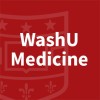
Efficacy and Safety of Liuwei Dihuang Pill Versus Placebo in Presbycusis With Shen (Kidney)-Yin...
PresbycusisAge-related Hearing Loss1 moreThe objective of this study is to examine the effects and safety of Liuwei Dihuang pill and placebo in presbycusis with Shen (kidney)-yin deficiency.

Development and Assessment of a Spanish-Language Hearing Loss Toolkit for Self-Management
Hearing LossThe objective of this application is to develop and evaluate Spanish-language hearing education materials for adults. Our hypothesis is that participants will demonstrate better understanding of their hearing loss and associated difficulties, and will be better able to identify options for self-management following delivery of culturally and linguistically appropriate patient education materials.

Auditory Brainstem Implant (ABI) in Children With No Cochleae or Auditory Nerves
Hearing LossBilateral (Causes Other Than Tumors)This study is a feasibility study of the Nucleus 24 ABI in children without NF2. It will be conducted as a repeated-measures, single subject experiment in order to accommodate the known variability in cochlear implant clinical results. Data obtained in the course of this study will be compared with the existing published outcome data from children with normal hearing and with cochlear implants (CIs). These comparisons may provide additional useful information about the progress of ABI subjects' performance over time. Also, this may allow the results of the current study to be utilized to design future pivotal studies of the device in the pediatric population.

Evaluation of Deep Brain Stimulation (DBS) of the Right Operculum 3 (OP3) in Permanent Non-pulsatile...
Severe Permanent Uni or Bilateral Non-pulsatile TinnitusWithout Associated Vestibular Pathology2 moreThis pilot study aims at evaluating the effectiveness of the treatment of unilateral or bilateral, non-pulsatile, disabling, tinnitus, without vestibular dysfunction, using Deep Brain Stimulation (DBS) of the parieto-insular right operculum 3 (OP3) in a cross-over, double study design.

Single-Sided Deafness and Asymmetric Hearing Loss
Hearing LossUnilateral2 moreThe purpose of the study is to evaluate the long-term safety and effectiveness of cochlear implantation of the approved population in adults and children with single-sided deafness and asymmetric hearing loss.

Cochlear Implantation in Children With Asymmetric Hearing Loss or Single-Sided Deafness Clinical...
Asymmetric Hearing LossSingle-sided Deafness1 moreThis is a two-phase study that compares performance growth pre-implant with current hearing aid (HA) technology versus post-implant with a cochlear implant (CI) in children with either asymmetric hearing loss (AHL) or single-sided deafness (SSD). Post-implant performance with a CI alone is expected to outperform pre-implant performance with a HA. The study also evaluates the effectiveness of bimodal hearing defined as a CI in the poor ear and a HA in the better ear for AHL or a CI in the poor ear and normal hearing in the better ear for SSD compared to pre-implant performance. The study examines factors contributing to CI outcomes.

Characterizing Variability in Hearing Aid Outcomes in Among Older Adults With Alzheimer's Dementia...
Hearing LossSensorineural2 moreThis current translational project, funded by NIH, aims to better understand the impact of various signal modification strategies for older adults with Alzheimer's dementia and its potential precursor, known as amnestic mild cognitive impairment. The investigators hypothesize that adults with Alzheimer's dementia represent an extreme case of restricted cognitive ability, such that very low working memory capacity and overall reduced cognitive capacity will limit benefit from advanced signal processing. Thus, the investigators hypothesize that adults with Alzheimer's dementia will receive greater benefit from acoustically simple, high-fidelity hearing aid processing that minimally alters the acoustic signal.

Autoinflation: Alternative in the Treatment of Otitis Media With Effusion
Otitis Media With EffusionHearing LossOtitis media with effusion (OME) is a common finding affecting children and the main cause of acquired hearing loss in the pediatric age. OBJECTIVES The purpose of the clinical study is to determine whether self-inflation using a new device: It is an effective non-invasive treatment during the watchful waiting period, with the ability to improve hearing loss and prevent surgical treatment; Maintains long-term hearing improvement;

Retrieval Practice for Word Learning for Deaf and Hard of Hearing Children
Hearing LossLanguage ImpairmentThis study is designed to advance the promising yet underutilized research on retrieval practice by evaluating the effectiveness and efficiency of two key retrieval practice features (feedback and spacing). The study uses four single case adapted alternating treatments studies, each with four 5- to 8-year-old children who are deaf and hard of hearing to evaluate the effects of feedback and spacing on the efficiency of word learning and retention.

Eyes On Lips? Speechreading Skills and Facial Expression Discrimination in Children With and Without...
Hearing ImpairmentHearing Impaired ChildrenThe goal of this clinical trial is to find out the role of background factors and gaze use in children's speechreading performance. The main questions it aims to answer are: Which background factors and eye gaze patterns are associated with the best speechreading results in hearing children and those with hearing impairment/loss? Are children's gaze patterns and facial expression discrimination associated with interpretation of emotional contents of verbal messages in speechreading? What is the efficacy of intervention that is based on the use of a speechreading application to be developed? Participants will be tested with linguistic and cognitive tests and tasks tested with a speechreading test and tasks with or without simultaneous eye-tracking about half of the participants with hearing impairment/loss will train speechreading with an application Researchers will compare the different age groups and the results of hearing children to those of children with impaired hearing to see if there are differences.
